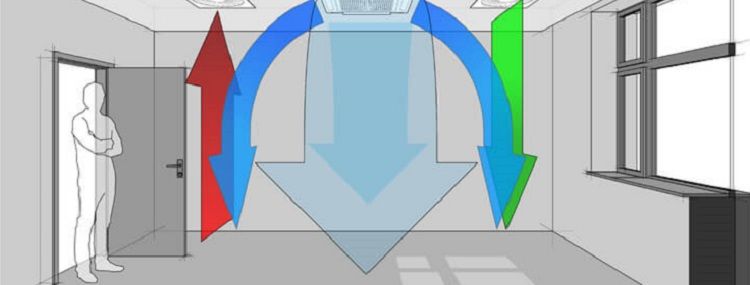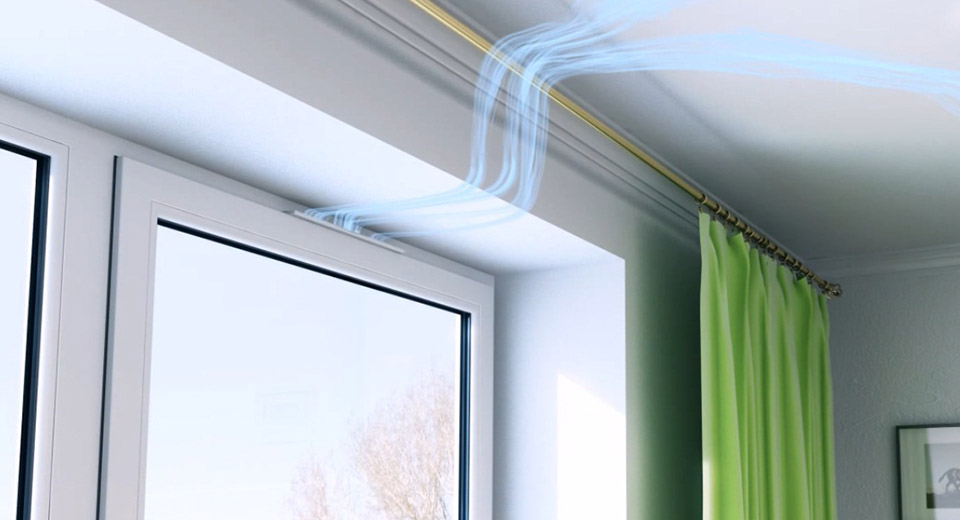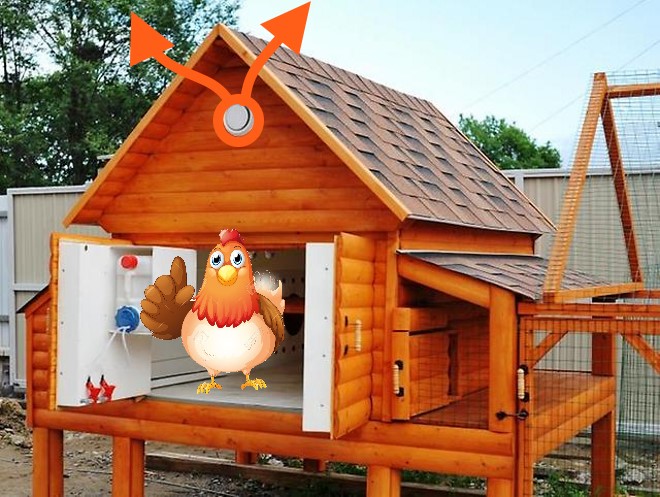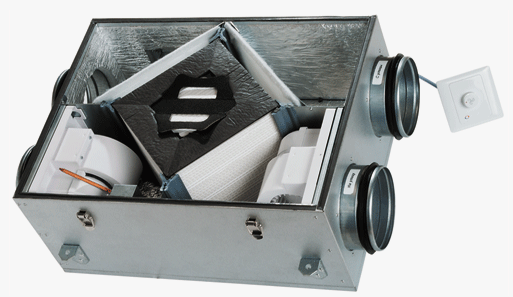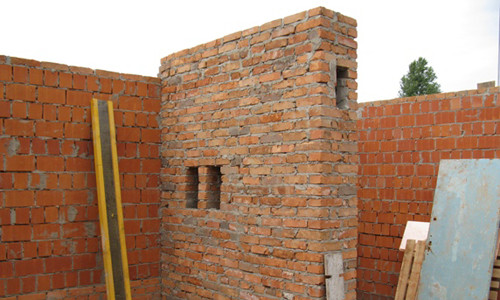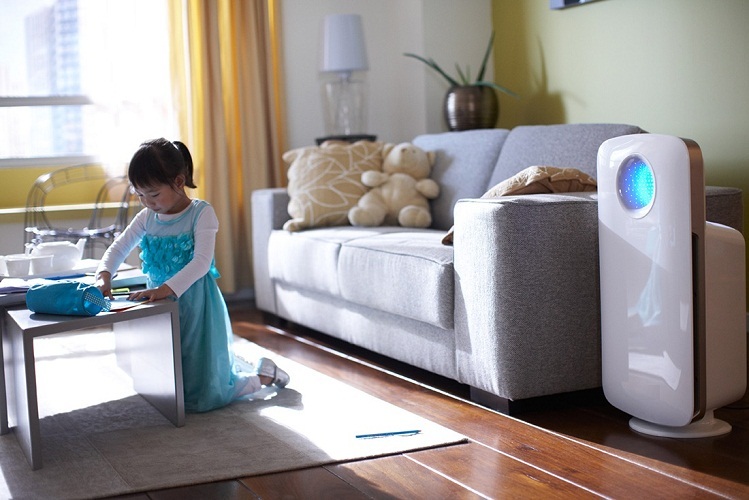A ventilation sound absorber is an invaluable tool for reducing loud sounds that occur in supply and exhaust systems installed in residential and commercial premises. This device allows you to create a healthy and comfortable environment in a confined space, even at night, when people need silence for a good rest. There are many ventilation mufflers on sale, differing in device, size and price policy. To choose a sound absorber for ventilation, you should familiarize yourself with the features, differences and principles of operation of these devices.
The principle of operation of a silencer for ventilation
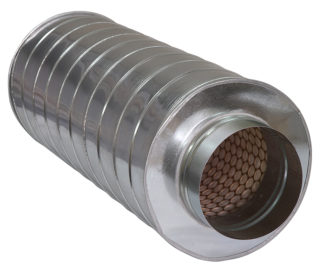
In the process of air movement through communications, unwanted noises inevitably arise, which distract from work, get on the nerves, and interfere with sleep. Even a short stay in such conditions is unpleasant.
Noise in channels occurs under the influence of such factors:
- rotation of the propeller or drum blades;
- eddies arising in channels of square and rectangular cross-section;
- the presence of foreign objects, dirt, fragments of frozen mortar.
Ventilation silencers are used in forced-type systems. By themselves, these products do not increase their efficiency and do not in any way affect the purification of the air entering the premises. Their purpose is to reduce the volume of the sound generated by the rotation of the electric propeller.
The principle of operation of the ventilation silencer is to absorb noise by sound-insulating materials that are located around the air ducts. It is a simple, inexpensive, yet effective design that works equally well for residential and industrial applications.
Existing types of silencers
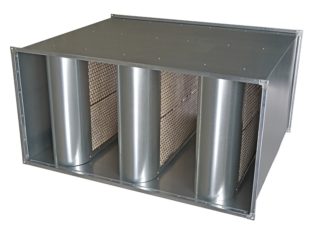
There are many models of mufflers on sale that work according to the same principle, but differ in technical characteristics.
According to the internal structure, the products are divided into the following categories:
- Tubular. They are a double design, where one pipe is located inside another, which has a larger diameter. The inner part has holes, and the outer one is solid and smooth. The gap between the sections is filled with soundproofing material so that no voids remain. The sectional shape of the tubular sound attenuator for ventilation can be round, square and rectangular. The section of the inner pipe must match or be larger than that of the channel in which the device is installed. In most cases, such mufflers are mounted on highways with a diameter of up to 50 cm.The length of the device itself is limited to 120 cm.
- Lamellar. They are made in the form of boxes with lamellar jumpers installed inside. The design of the products resembles mufflers for cars. The plates are covered with soundproofing material, which absorbs loud sounds. The distance between the plates varies between 7-30 cm and can be adjusted. Decreasing the interval reduces noise, but system throughput also degrades. The ventilation plate muffler can only be installed in systems with rectangular ducts.
Basalt or glass wool, felt, wool and similar materials are used as an insulating material.
Device dimensions and sound absorption
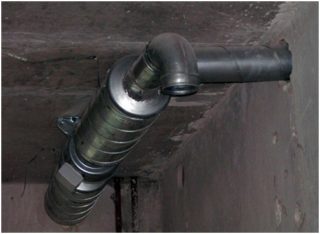
When choosing a ventilation muffler, you need to focus on the compliance of its dimensions with the parameters of the air duct, the size and layout of the premises. The best option is considered to be the length of the product 60-80 cm. This length is usually enough to effectively neutralize the sounds that are emitted by the blades of a household fan. If the hood is powerful and loud, you will need to take a device 120 cm long. Larger devices should not be taken or made, as they become sources of indirect noise. It is better to put two medium devices or disassemble one large one and install the halves at a distance of 70-100 cm from each other.
The second factor to pay attention to is the rate of decrease in the volume of sounds produced by the technique. The optimal level is considered to be 10-15 dB. This information is indicated in the instructions for the product. If, in practical measurements, the indicators are lower, this is a reason to hand over the purchase back to the store. Most likely this is a fake, in the production process of which the technology was violated or low quality heat insulators were used.
It is recommended to install the mufflers close to the fan. This technique allows you to catch all the noise before it enters the duct.
Features of use
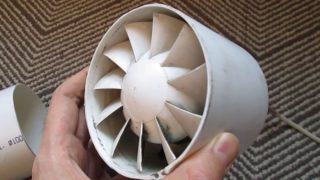
There are no requirements and standards regarding mandatory installation, installation location, types and sizes of devices. The only rule is to maintain the throughput of the system at a level that provides the required air exchange rate for a room of this type.
The installation of the noise absorber is carried out at the initiative of the property owner.
If this procedure is performed in a multi-storey building, the following rules must be observed:
- all work only within the limits of your apartment, without interfering with the construction of common use;
- it is forbidden to remove exhaust ducts from gas equipment into vertical shafts not intended for this;
- when the ventilation is brought out to the street, it is necessary to agree with the managing organization the place of drilling the wall to prevent weakening of its bearing capacity.
When the actual speed of air movement exceeds the calculated productivity of the products, it decreases, and in some cases, the opposite effect can be observed, when the mufflers begin to make noise louder than the fans themselves.
Selection rules
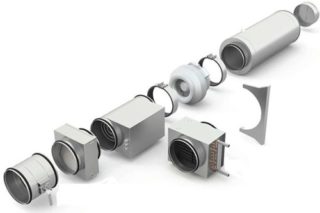
There are no statutory regulations regarding the selection of silencers for ventilation.
The following criteria should be taken into account:
- noise reduction parameters prescribed by the manufacturer;
- maximum throughput;
- working temperature range;
- the presence or ability to install filters;
- section and shape of the branch pipe;
- compliance of the inner diameter with the parameters of the duct;
- orientation of the product during installation;
- length and outer diameter.
If the product will be in sight, you need to pay attention to its appearance and evaluate the possibility of subsequent decoration for the interior of the room.
Installation guide
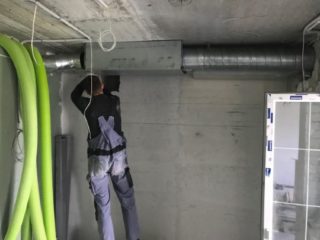
The installation process of the silencer is not particularly difficult; any home craftsman can easily handle it.
Installation should be carried out in the following sequence:
- Take measurements, apply markings.
- Make a cut in the duct corresponding to the length of the muffler, taking into account the fittings.
- Insert the product into the cut, secure with the supplied clamps or your own screws and clamps.
- Seal the joints with sealant.
- Decorate the assembled structure.
If space permits, additional sound insulation can be installed over the muffler. This is guaranteed to get rid of noise.
Making a muffler with your own hands
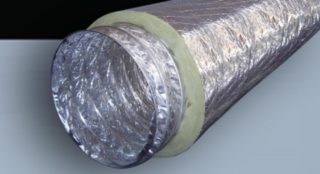
If you have the initial skills in repair work, you can save a lot by making a silencer with your own hands.
For work you will need:
- roulette;
- drill, grinder;
- screwdriver;
- file;
- a hammer;
- thermal insulation material;
- self-tapping screws;
- plastic clamps;
- a pipe corresponding to the parameters of the air duct;
- the second pipe with a diameter / section larger by 7-10 cm;
- sealant.
The work is carried out in the following sequence:
- Sawing equal lengths from the pipe.
- Punching the inner fragment with holes 3-5 mm in diameter with an interval of 1 cm.
- Wrapping the inner part with a sheet of sound insulator. Fixing the material with plastic ties.
- Cutting the edges of the outer tube and bending the petals outward.
- Inserting an inner fragment into an outer one. Fixing them with petals.
- Decorating the finished product. You can use colored film, paint, wallpaper.
It remains to install a muffler and enjoy the silence.

